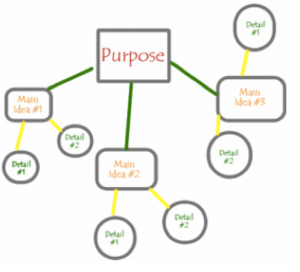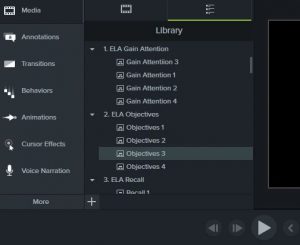Just Enough Instructional Design to Make Great Training Videos
An effectively designed eLearning course or training module can make a world of difference in someone’s personal or professional life. People will pay to watch your video training because they hope they will learn something new that can perhaps bring them additional income, help them enjoy their hobby, change their habits, get ahead at work or even learn more about the world.
Science already knows a lot about how people learn and develop skills.
Research on how we learn, how we change our behavior, and how we develop our expertise has provided a wealth of information that we can use when we create video training.
So, if you’re getting started in video training and you’re confused about how to organize your content so your students will really learn from it– here’s two Instructional Design Techniques I’ve been using for years to make better video training…

Many years ago I got a graduate degree in a field called Instructional Technology and, like a lot of upper level degrees, we learned a whole bunch about theories. Most of them I barely remember, however, I did take away two learning theories that I still use when developing my Camtasia Training courses. And when I spend the extra time to use these techniques my video courses always come out better.
The First One is Chunking
Content chunking refers to the strategy of making a more efficient use of our short-term memory by organizing and grouping various pieces of information together. When information is chunked into groups, the brain can process them easier and faster.
Often I see people pasting content onto a screen in an elearning video as if it were a book and ending up with big walls of text. Instead you need to have just small amounts of text on the screen(if any) to break the information into small chunks through the video.
You need to spend some time classifying the content based on what’s important to learn, and then group and organize the information into bite sized pieces. This will stop you from overwhelming your learner with too much information on each screen. I also make sure to break up the courses into Modules, Lessons and Topics as another way to organize the content.

The Second One is the Nine Events of Instruction
This strategy provides you with a foundation for good instruction by suggesting Nine Events that can be followed step by step to be sure the learner walks away having truly learned the information.
The Nine Events are:
- Gain the students attention
- Stimulate the recall of prior knowledge
- State the Goal of the training
- Present the information (Chunk it up too)
- Use Learning Guidance
- Have them Practice (this adds to engagement)
- Give them Feedback
- Provide an Assessment
- Enhance Retention and Transfer
I generally use the Nine Events at the Lesson level and I have created my own storyboard and Camtasia templates that force me to follow and strategize how I will implement each event.

These two theories can serve as the backbone or the structure of your eLearning courses, and will help you to create eLearning courses that engage and motivate your students to acquire and retain the information you are offering.
—————————————————————————————————————–
We’ve just launched a new product that makes it simple to bring both Chunking and the Nine Events of Instruction into your Camtasia Video Courses. Learn More about the Elearning Assets.
—————————————————————————————————————–
